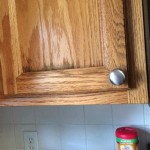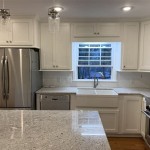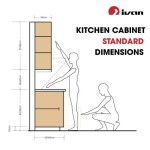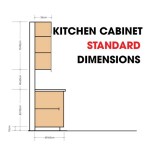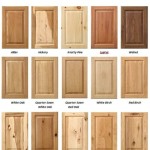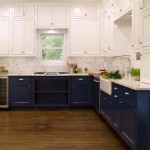Can I Put A Glaze On My Kitchen Cabinets? A Comprehensive Guide
The question of whether to apply a glaze to kitchen cabinets is a complex one, dependent on various factors including the cabinet’s existing finish, the desired aesthetic, and the skills of the person undertaking the project. Glazing can add depth, highlight details, and impart an antique or distressed look to kitchen cabinetry. However, it's essential to understand the process, potential challenges, and necessary preparations before proceeding.
This article provides a detailed exploration of the glazing process for kitchen cabinets, outlining key considerations and essential steps. It aims to equip individuals with the knowledge necessary to make an informed decision about whether glazing is the right choice for their kitchen cabinets and, if so, how to approach the project effectively.
Understanding Glaze and its Effects
Glaze, in the context of cabinetry finishing, refers to a semi-transparent coating applied over a base coat of paint or stain. Its primary purpose is to settle into recesses, corners, and profiles, accentuating the cabinet's design elements and creating visual interest. The contrast between the base color and the glaze color is what produces the desired effect. Glazes are available in a wide range of colors, allowing for considerable customization. Common glaze colors include shades of brown, black, gray, and antique white.
The effect of a glaze is largely driven by the application technique. A light, even application will result in a subtle enhancement of the cabinet's details. A heavier application, followed by strategic wiping or brushing, can create a more dramatic, aged appearance. The choice of glaze color also plays a significant role. A dark glaze over a light base will create a high-contrast look, while a glaze closer in tone to the base color will produce a more understated effect.
Furthermore, understanding the type of glaze is crucial. There are primarily two types: water-based and oil-based. Water-based glazes are generally easier to work with, dry faster, and are less prone to yellowing over time. Oil-based glazes offer a longer working time, allowing for more flexibility in application and manipulation, but require more careful ventilation and cleaning.
Assessing Cabinet Suitability for Glazing
Not all kitchen cabinets are suitable candidates for glazing. The existing finish, the cabinet material, and the overall condition of the cabinets all play a role in determining the potential success of the project. Cabinets with intricate details and profiles are ideal, as the glaze will effectively highlight these features. Flat, featureless cabinets may not benefit significantly from glazing, as there are fewer areas for the glaze to settle and create visual interest.
The existing finish is also a key consideration. Cabinets with a durable, factory-applied finish may require more extensive preparation, such as sanding or the application of a bonding primer, to ensure proper adhesion of the glaze. Cabinets with a worn or damaged finish may need to be repaired and refinished before glazing. It is generally recommended to apply a new base coat of paint or stain before glazing, even if the existing finish is in good condition. This provides a uniform surface for the glaze to adhere to and allows for better control over the final color.
The cabinet material itself can also influence the glazing process. Solid wood cabinets are generally more forgiving and can withstand multiple layers of finish. Laminate or veneer cabinets, on the other hand, may be more susceptible to damage from sanding or excessive moisture. It's crucial to identify the cabinet material and research appropriate preparation and application techniques before proceeding.
Ultimately, a careful assessment of the cabinets' condition and construction is essential to determining whether glazing is a viable option. If there are concerns about the cabinet's suitability, it may be prudent to consult with a professional cabinet refinisher.
Steps Involved in Glazing Kitchen Cabinets
Assuming the cabinets are deemed suitable for glazing, a systematic approach is essential to achieving a professional-looking result. The process typically involves the following steps:
- Preparation: This is arguably the most crucial step. Begin by thoroughly cleaning the cabinets with a degreasing cleaner to remove any dirt, grease, or grime. Lightly sand the existing finish to create a slightly roughened surface for better adhesion. If the existing finish is damaged or uneven, more extensive sanding may be required. Fill any holes or imperfections with wood filler and sand smooth. Apply a bonding primer, if necessary, to ensure proper adhesion of the paint.
- Base Coat: Apply one or two coats of a high-quality paint or stain in the desired base color. Allow each coat to dry completely according to the manufacturer's instructions. For a smooth finish, consider using a sprayer rather than a brush or roller, but brushing and rolling is suitable for many applications. Lightly sand between coats to remove any imperfections and create a smooth surface for the glaze.
- Glaze Application: Apply the glaze liberally to the cabinet surfaces using a brush, rag, or sponge. Work in small sections, ensuring that the glaze settles into all the details and crevices. The key is to apply enough glaze to allow for manipulation and removal.
- Wiping and Manipulation: Immediately after applying the glaze, use a clean rag or sponge to wipe away the excess glaze, leaving it behind in the recesses and details. The amount of glaze removed will determine the intensity of the effect. Experiment with different wiping techniques to achieve the desired look. You can use a dry rag for a more dramatic effect or a slightly damp rag for a more subtle look. Brushes can also be used to stipple or blend the glaze.
- Sealing: Once the glaze is completely dry, apply a protective topcoat of clear polyurethane or varnish. This will protect the glaze from wear and tear and make the cabinets easier to clean. Apply two or three coats of topcoat, sanding lightly between coats for a smooth, durable finish.
- Reassembly: After the topcoat has dried completely, reassemble the cabinets, including hardware such as knobs and pulls.
Each step requires careful attention to detail and adherence to the manufacturer's instructions for the specific products being used. Practicing on a scrap piece of wood or an inconspicuous area of the cabinet is highly recommended before tackling the entire project.
Potential Challenges and Considerations
While glazing can be a rewarding project, it's important to be aware of potential challenges. One common issue is uneven glaze application, resulting in a blotchy or inconsistent finish. This can be avoided by working in small sections and carefully wiping away the excess glaze. Another challenge is achieving the desired color and intensity of the glaze. Experimentation is key, and it may be necessary to mix different glaze colors to achieve the perfect shade.
Proper ventilation is essential when working with glazes and finishes, especially oil-based products. Ensure adequate airflow to prevent the buildup of fumes and protect your health. Wear appropriate personal protective equipment, such as gloves and a respirator, to avoid skin contact and inhalation of fumes.
The time commitment involved in glazing kitchen cabinets should not be underestimated. The process can take several days, depending on the size of the kitchen and the complexity of the cabinet design. It's important to factor in drying times for each coat of paint, glaze, and topcoat. Rushing the process can lead to a subpar result.
Furthermore, the cost of materials should be considered. While glazing can be a cost-effective way to update kitchen cabinets, the price of high-quality paint, glaze, brushes, sandpaper, and other supplies can add up. It's essential to budget accordingly and choose products that are appropriate for the project.
Finally, when working with older cabinets, there is a possibility of encountering lead-based paint. If you suspect that your cabinets may contain lead paint, it's crucial to take appropriate safety precautions, such as wearing a respirator and using wet sanding techniques to minimize dust. Consider having the paint tested for lead before proceeding with the project.
In conclusion, while the answer to the question “can I put a glaze on my kitchen cabinets?” is often yes, it necessitates careful preparation, understanding of materials and techniques, and realistic expectations. If uncertain about any aspect of the process, consulting with a professional is recommended.

How To Glaze Kitchen Cabinets Diyer S Guide Bob Vila

How To Glaze Cabinets At Home With The Barkers

How To Glaze Cabinets At Home With The Barkers

How To Glaze Kitchen Cabinets Diyer S Guide Bob Vila

Rescuing And Reviving A Glazed Distressed Kitchen Bella Tucker

How To Glaze Kitchen Cabinets Diy Network

3 Great Reasons To Glaze Your Kitchen Cabinets

How To Glaze Cabinets With Gel Stain Adventures Of A Diy Mom

Glazed Cabinets Add Traditional Depth Dimension To Any Kitchen

How To Glaze Kitchen Cabinets
Related Posts

